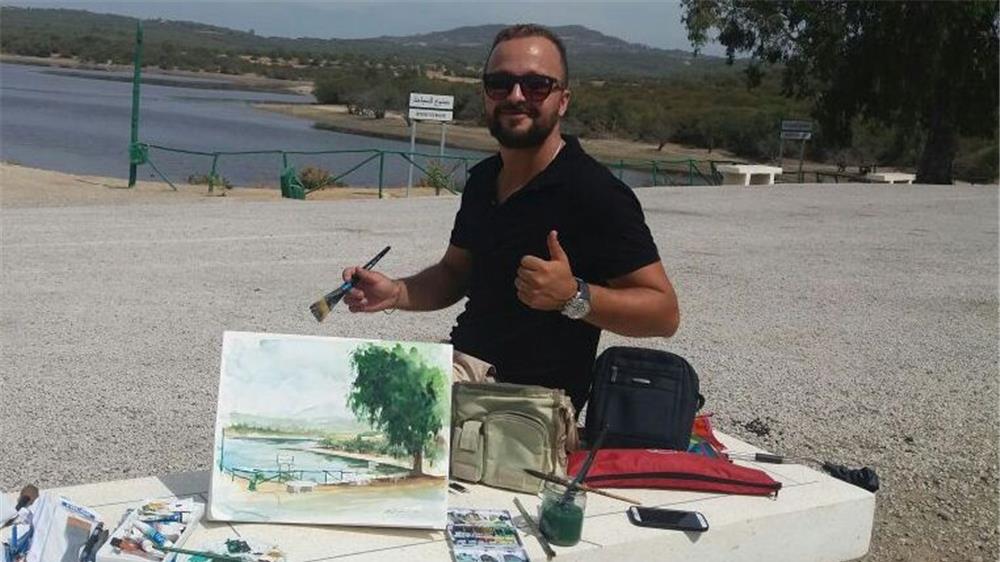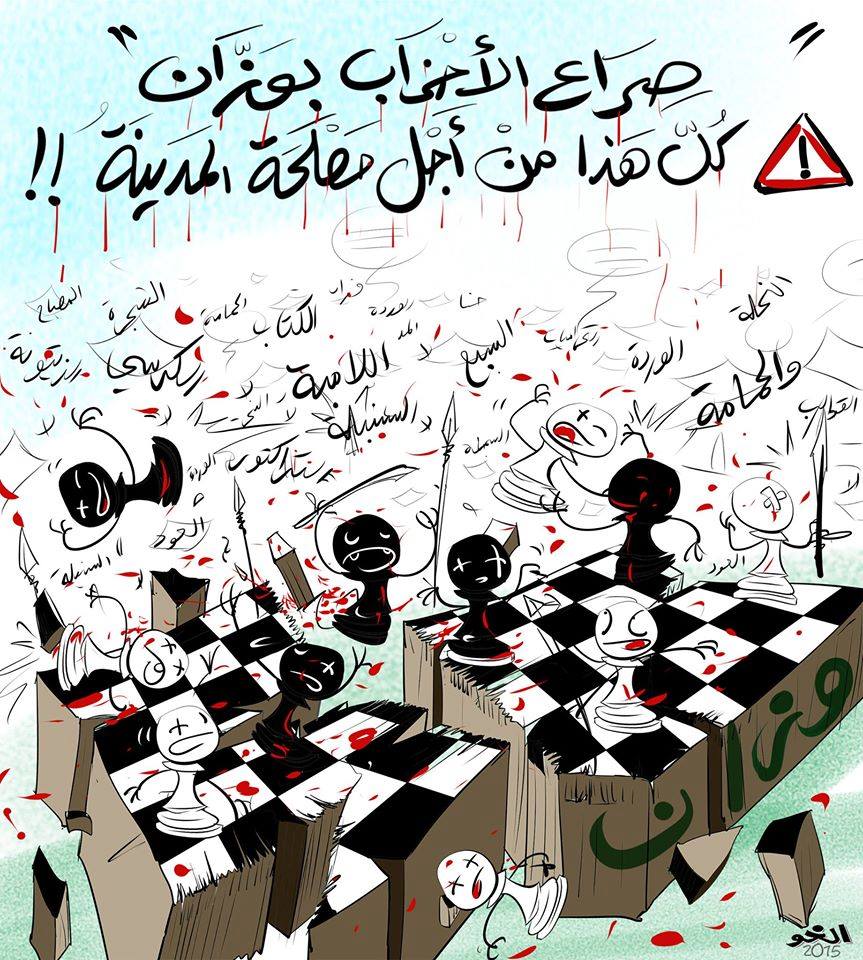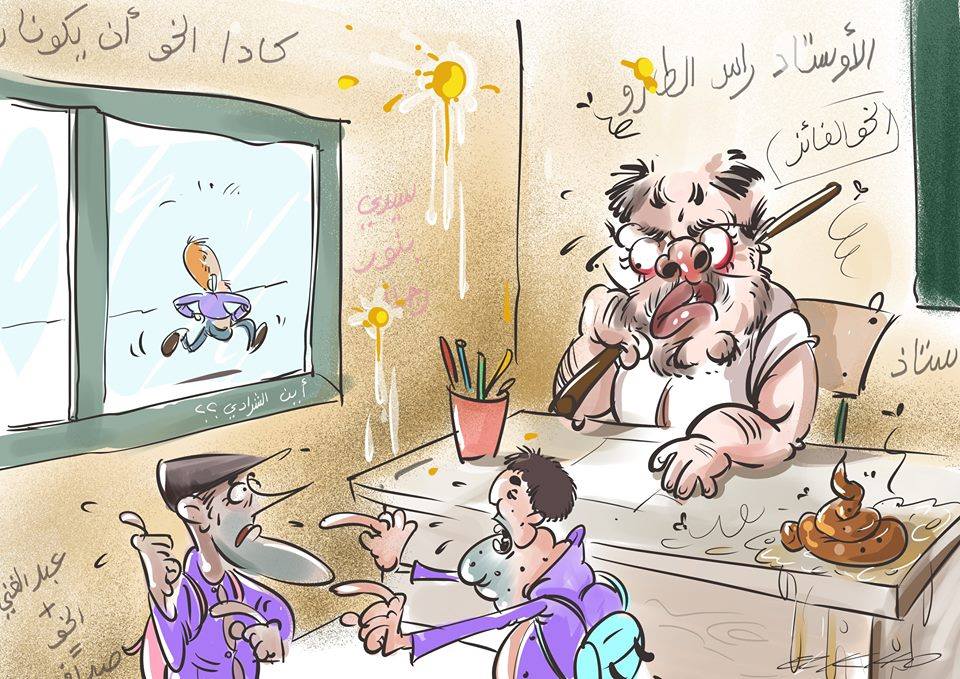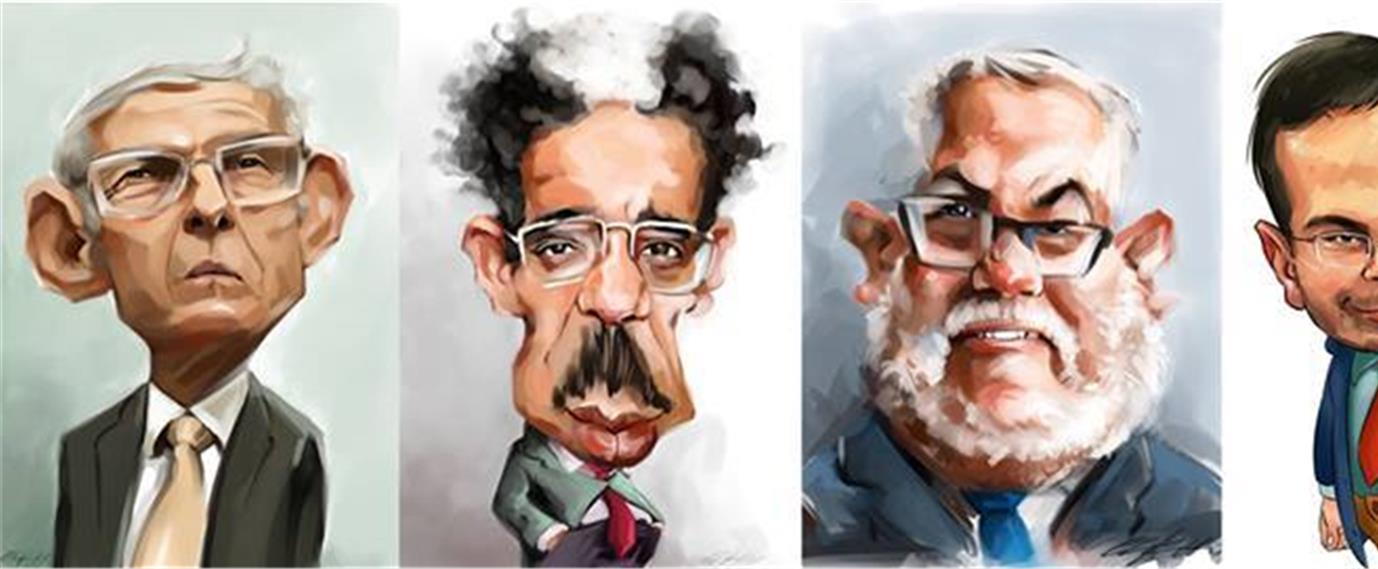في الغالب، يدخلُ الكاريكاتير الصحفي من باب التسلية، بينما خلق ليسخر من الواقع المعاش على أشد ما يكون عليه النقد. ولعل "حنظلة" الذي أوجد شخصيته رسام الكاريكاتير الفلسطيني الشهير، ناجي العلي، هو الشاهد العربي على أن القضية يمكنها أن تتمثل كاريكاتيرا ورمزا.
هل الكاريكاتير سياسي؟
ليس بالضرورة أن يكون الكاريكاتير الصحفي سياسيا، لكن لأن كل الطرق تؤدي إلى السياسة، فإن رسامي الكاريكاتير ليسوا بمعزل عن التأثر بها. محمد الخو (المغرب، 1987) واحد منهم، فنان من أهم رسامي الكاريكاتير المغاربة، بانشغال كامل بهواجس المواطنين والبلاد، وبأحلامهم ومخاوفهم، ولهذا تتجدد رسوماته كل يوم بالتوازي مع الحراك السياسي والمجتمعي.
يقول لـ"مجلة الصحافة" إن "ما تناقشه رسومات الكاريكاتير اجتماعيا، يثير بذات اتجاه الطرافة إشكالا سياسيا لارتباط الاثنين ببعضهما البعض" وبرأيه أن "المغاربة يمارسون فنون سخرية عدة في حياتهم اليومية، علي أكثر من مستوي، بدءا من موروثهم الثقافي ووصولا إلى السخرية الذاتية، لذا فقدرتهم على استيعاب هذا الفن تتطور".
هذا التطور هو العلاقة بين الحدث ونبضه في الشارع، ويلتقطها رسامو الكاريكاتير أسرع من غيرهم وبشكل أكثر إبداعا. إنه "يضع ابتسامة على الوجه وسكينا في القلب" هكذا يسمي الخو "التشخيص" الذي يقوم به الكاريكاتير في جمعه بين الفن والصحافة وآراء الشارع والنقد.
من هذا المنطلق تجد رسامي الكاريكاتير أو "الكاريكاتيريست" في اللهجة المحلية ) تعريبا عن كلمة les caricaturistes في اللغة الفرنسية ( يتصيدون أخطاء السياسيين و"مواطن الخلل في المنظومة السياسية" كما يسميها الخو، إذ "كل رسام كاريكاتيرمعارض للسياسة تلقائيا، و لا يمكننا، في غالب الأحيان، أن نصور رسما يمجد السياسة".

السوشيال ميديا .. مادة للكاريكاتير والتفاعل
معارضة السياسة تحول أحيانا في الكاريكاتير إلى تمرد، ولعل هذا هو الوصف المناسب لرسومات كاريكاتير محمد الخو، فقد انتقل من تقليديتها إلى رسم البروفايلات الكاريكاتورية. على هذه الأخيرة يضع كل ما يلتقطه من أصداء الشارع، وتتحول لمسته الفنية إلى طابع على وجوه السياسيين والفنانين والإعلاميين والرياضيين والبسطاء، وكل من يخلق الحدث في المجتمع.
يعيد الخو الفضل في هذه الالتقاطات إلى مواقع التواصل الاجتماعي "عبرها نعرف الكثير عن قرائنا، ونتحصل أيضا على المعلومة والخبر، وبذات الوقت يصل فننا إليهم".
اللجوء إلى مواقع التواصل الاجتماعي، لينشر رسامو الكاريكاتير أعمالهم، تطور إلى خلق روابط ومجموعات متكاثفة ولها ذات الانشغال، من ذلك إنشاء "الكاريكاتيريست" في المغرب لمجموعة خاصة حملت اسم " MA3RACARTON " أي "معركة الكرتون" لكن الهدف منها ليس فقط تجميع رسوم الكاريكاتير والنشر، بل "إنها فسحة لبناء ثقافة تقبل النقد، وتعزيز التسامح".. المغزى أن رسامي الكاريكاتير في المغرب يرون أن عليهم أن يكونوا قدوة، وأن يبادروا بتطبيق ما يطلبونه من غيرهم: تقبل النقد والسخرية أحيانا، وهو ما يجعلهم يرسمون بعضهم البعض في حالات مختلفة أقل ما يقال عنها إنها طريفة.
من جهة أخرى، يرتبط اللجوء إلى مواقع التواصل الاجتماعي، لينشر رسامو الكاريكاتير أعمالهم إلى ضيق الحيز الذي تخصصه الصحف لإنتاجاتهم. يقول الخو "الجرائدتعتبر الرسم الكاريكاتيري مجرد رسم توضيحي ليس إلا، ولا تعتبره مادة صحفية، كما أنها تفرض عليه رقابة لا تسمح بمنحه، على سبيل المثال، فرصة الانفتاح على المستوى العالمي".
جريدة خاصة وملتقى
من المجموعات على السوشيال ميديا إلى تكاثف آخر على أرض الواقع بين رسامي الكاريكاتير في المغرب، يتمثل في الملتقى الوطني لفن الكاريكاتير والإعلام، الذي قطع الطريق إلى دورته الثامنة هذه السنة، حاملا ذات الرسالة "الصحافة والكاريكاتير يدوران في فلك واحد".
هذا الفلك لا تحدده الجرائد ومساحات النشر عليها بل يحدده الفن، وهو ما يحرص الملتقى على غرس ثقافته في جيل الأطفال الصغار، حيث يقدم ورشات لرسم الكاريكاتير، يؤطرها ويشارك فيها الكاريكاتيريست المغاربة من مختلف المناطق، كما يعقدون ندوات متخصصة تنفتح على الصحفيين والمهنيين والوزارة الوصية، وزارة الاتصال المغربية.
مبادرة أخرى تمنح اليوم للكاريكاتير في المغرب رقعة تواجد أكبر، هي الجريدة الساخرة "بابوبي" الصادرة منذ أشهر قليلة فقط، ويعد إطلاقها خطوة تحسب للصحافة في المغرب ومهنييها، خاصة وأنها لاقت تضييقا في السابق، أدى إلى إغلاق جريدة حملت اسم " Doumane " سنة 2003، فيما تعرض رسامو الكاريكاتير في المغرب للقمع والضغط، بينهم صاحب التجربة الحالية "بابوبي" خالد كدار، الذي صدر بحقه حكم موقوف التنفيذ بالسجن، بعد نشره لرسم كاريكاتير لأحد أفراد العائلة الملكية في المغرب .
تجربة "بابوبي" الورقية سبقتها تجربة إلكترونية حملت ذات الاسم، بينما يحاول كدار وزملاؤه عبر جريدتهم منح منبر للجيل الجديد من رسامي الكاريكاتير، في سعي منهم إلى جعلهم يتجاوزون كثيرا من العقبات التي حاولت إصابة الكاريكاتير في المغرب بالشلل.
مع ذلك يبدو رسام الكاريكاتير محمد الخو، متفائلا بشأن تجاوزهذه العقبات، معبرا عن تفاؤله "لأجل إنعاش الانفتاح على الكاريكاتير كجنس تعبيري، حتى يدخل، بشكل ملح، ضمن الثقافة البصرية للمتلقي المغربي".
نماذج من أعماله:











































